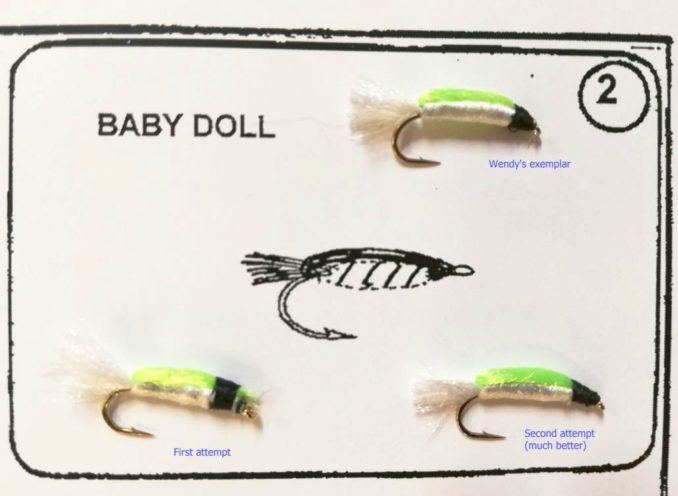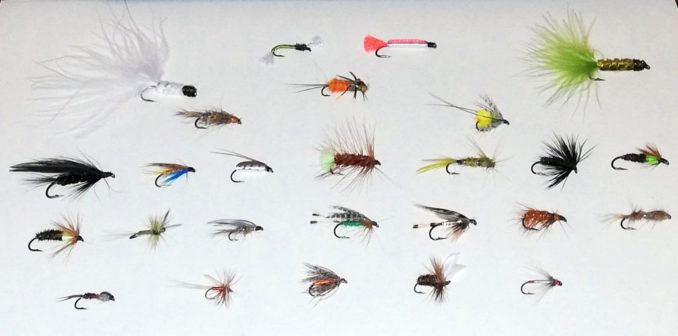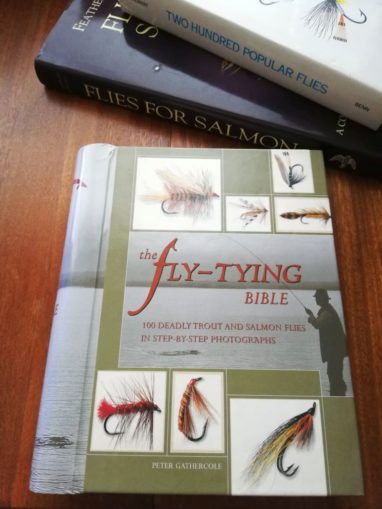Ah the joys of British weather. There we were in Bakewell, on a bitter February day. My husband and I had gone across by bus and, when we’d left home, it had been a nice, cheerful, sunny one. After a fair old journey, first to Derby, then through some lovely Derbyshire towns and villages, we were not warm. In a stiff breeze, banks of dark clouds scudded by overhead and we found ourselves dodging frequent sleety snow showers which came to earth apace — sideways!
Bakewell, for those who haven’t visited, is a pretty little town with a nice walk along the River Wye, one of the tributaries which feed the Derwent. It’s a popular tourist spot, famed for its sweet, jammy and almondy Bakewell Pudding. It’s often a starting point to visit other parts of the Peak District. Chatsworth House, the Blue John Caverns and other attractions are nearby, and other visitors come to walk the Monsal Trail, so in summer the town can get very crowded. Being anti-social beggars, we tend to go there in the quieter months. There’s plenty to see and, normally, we’d be happy just wandering.
But this day was unremittingly cold and, as there’s only so much coffee you can drink, we entertained ourselves by popping into some of the shops, without any real intent to buy a thing. We browsed the charity shops, bookshops, and kitchen shop, then had a wander into several of the rather posh country pursuits shops, looking at tweed jackets, hats, boots and Barbours which we knew full well wouldn’t come home with us.
We headed into the Orvis shop and, after fondly patting the two black bears which stand just inside the door, happily perused the shelves for a while. Up on the first floor, I noticed a tiny table set up in the corner with a jovial gentleman beavering away tying fishing flies. I walked over for a closer look and, as you do, got chatting to him. He introduced himself as Bob.
Now in years gone by I’ve done my share of fishing, but that was sea fishing, mostly for mackerel and the like. As equipment goes, what we used was fairly basic — rods and reels, floats and spinners, and a selection of lead weights (which Dad and I made over the winter, melting lead over a gas ring to pour into moulds we’d made, much to my Mum’s horror).
As this was my only experience of fishing, I was surprised by the vast array of different tools and materials around Bob, with yet more in in several bags and boxes. I thought the intricate detail of the tiny fly he was tying (which he told me was for trout), held tightly in a small vice, was simply beautiful. The meticulous care he was taking intrigued me. He explained what he was doing as he continued tying, building up the fly bit by bit. He told me why there are so many different flies, why trout and salmon flies are quite different, and why each fly pattern comes into its own and is important at different times of year. I had no idea, but now know that they are made to mimic different stages of the lifecycle of the insects the fish eat.
Watching him was marvellous and I dearly wanted to have a try myself. Apparently, this must have shown in my face as he soon told me about the small fly-tying group he goes to, once a week, and has done for many years. He asked whether I’d like to come along and see what they do, and whether I could get to the Baptist Chapel in the ex-mining town where they meet.
I was tempted, but a little hesitant. Looking at the mass of shiny tools and equipment, bags of hooks, feathers, fur, threads and goodness knows what else, this looked like a very expensive pass-time. In addition, I don’t fish these days and can’t see me starting again — and I’ve never even tried fly fishing. However, he said the group was small, friendly and welcoming and that there was no obligation to join. Just come along, have a chat and a cuppa with them, watch what they get up to and to see what I think.
So, slightly nervous, just a few days later I headed for Eastwood, the birthplace of D. H. Lawrence. Thankfully Bob remembered me straightaway and introduced me to the half a dozen men already there, who smiled in welcome. He took me across to meet the group’s organiser, a lovely lady by the name of Wendy, who has a wealth of experience, both tying and teaching. Until fairly recently, she also ran her own business, set up in the mid-1980s. She made flies for fishing, framed displays, fly-related jewellery and gifts, and greetings cards featuring flies. Her business sold fly tying materials, tools and game fishing tackle — frankly, there’s not a lot she doesn’t know about the subject!
Now, the group is a little unusual. It’s not a course and there is no ‘formal’ teaching. The members are varied in their backgrounds, experience and what they enjoy doing. Some focus on trout flies, some on salmon— big and complex these looked. Seriously intimidating! Everyone works on their own project and helps one another, sharing tips, techniques and sometimes materials, under the guidance of the experts: Wendy, Bob and another very experienced chap, Kevin. Most fly fish as well as tie and they are, as promised, a friendly bunch. There’s plenty of craic and banter, but when they get their heads down it’s a hive of activity.
To begin with, I watched as Wendy gave some instruction to someone who has tied for years, but who was self-taught so had missed out on learning some of the more basic techniques. Then, once he was underway, she proceeded to give me a rundown of the parts of a fly (quite a few), the parts of a hook and their types and sizes (there are lots!), some of the common types of materials that can be used (oh Lord, very lots!), together with some information about the techniques I’d be learning… hopefully.
With all this spinning in my head, Wendy started to tie an ‘Olive Nymph’, talking me through the materials and techniques step-by-step and answering my almost constant questions. Then, once the fly was finished (and greatly admired by me) she asked if I’d like to try to make one.
My first challenge was setting the tiny hook (well, tiny to me, but apparently quite large sized) in the vice securely. First blood went to the hook (ouch!), but I got it tamed and performed the ‘ping test’ to check it was securely held. Yay!
With that success under my belt, then came tying the thread onto the hook. Simple huh? Nope! Firstly, I don’t think I have enough hands. Then I couldn’t remember where the thread needs to start (Tip: it’s not right up against the hook’s eye). Oh yes, how to wind it isn’t as easy as I’d thought (you need to take the thread away from you, clockwise up and over the hook’s shank). I also quickly discovered that unless you keep the tension on the bloody thread as you wind it back over your first few turns it slithers straight off again.
That reminds me. Holding the bobbin is a skill to master. Ah, now that is a bit tricky. The bobbin holds the tension on the thread, allowing it to be drawn off the spool as needed…if, that is, you let it do its job and don’t take hold of the blasted thread yourself or let it run slack so it gets trapped between the spool and the bobbin. You need to hold it a little like a pen, with the tips of the fingers on the handle or possibly the thread tube (ceramic in this case, apparently more durable that steel). Fair enough, but what the heck do you do with the big lump which is the spool of thread? I have small hands which makes things a shade more problematic.
But gradually I figure it out and my confidence improves a little. After a few false starts and backtracks I made my first fly, building up the body from floss once the tail and breather (made of wool) was in place, then adding the rib, and finally creating the thorax from wound peacock herl (the naturally iridescent barbs from the feather). A small head, just using the thread, completes the fly. No whip finish or varnish for me at this stage mind you, just a couple of half-hitches to keep it all together.

© SharpieType301 2020
As you can see, compared to Wendy’s exemplar mine is a wee bit messy, with some of the green floss fibres from the thorax showing in the breather. But the sense of achievement and pride was massive, even more so when Bob said it’d catch a trout if I used it! I floated home that evening and couldn’t wait for the next session.
The next week came and off to Eastwood again. Tonight’s challenge was a ‘Baby Doll’. Some new techniques to pick up as well as trying to remember what we did last week. Again, getting the hook to sit securely in the vice was the first thing to accomplish. This week I made sure the damn thing didn’t bite me. Next step, tie in the thread onto the hook and then the wool to form the tail. This is when I realised that not being able to practice during the week was a big disadvantage. My fingers immediately gripped the thread, much to Wendy’s frustration. Hey ho, I’m not the first and won’t be the last to make this mistake, but I have a feeling that my tombstone is going to be inscribed “stop holding the bloody thread!”.
No ribs are needed for the ‘Baby Doll’ pattern, but two colours of wool are used (white, then green, then white again). My first attempt was not great. You can see below that the tail is unevenly trimmed, the white body is a little lumpy and the green wing case twists around the hook slightly from the side of the bend to the top of the shank. As for the head… oh dear, enough said!
So, as we still had time, I tried tying a second fly, learning from the mistakes I’d made the first time. The first correction was to start further back along the hook’s shank. This leaves room which is needed for the head to be built up and tapered at the hook’s eye end. My second attempt is altogether a better effort. Not perfect, but closer to Wendy’s exemplar. The main fault in this second fly is that I slightly twisted the green wool forming the wing case when it was drawn back along the body towards the hook’s eye. The fibres should run nice and straight along the top of the body before being tied in and the head created. Next time, eh? To finish it off this time I tried a whip finish. Aha, once you get the idea it’s not as difficult as I thought it’d be.

© SharpieType301 2020
There is a huge amount to learn but that is right up my street, if a little daunting. I love the hands-on practicality and problem-solving aspects, and another big attraction is that something beautiful can be made, and that lovely thing is useful. My fear that this can be an expensive hobby is not really a problem at this stage. I don’t need to buy anything of my own just yet, and I still have a few tools that’ll come in handy from my conservation kit (a story for another day). When I do need to buy, second-hand stuff is often available. The group members are wonderfully generous and are happy to provide a few bits and pieces of material for me to learn. Bob was right, they are so kind and surprisingly quickly seem to have accepted this newbie bird who gives as good as she gets when they gently take the mick.
Looking ahead to what we’d planned for week three, Wendy quickly made a ‘Pheasant Tail Nymph’ (see below) which incorporates still more new techniques, including working with feathers to form a tail, and with ‘dubbing’ (I think this is rabbit fur), spinning it onto a thread so it can be wound onto the eye end of the hook to build up the thorax. It looks delicate and a bit of a challenge so bring it on!

© SharpieType301 2020
Wendy kindly loaned me a vice and a bobbin and thread to use at home to practice what we’ve worked on so far. I have three hooks and odd bits of material to have a go on my own, so I head off home, completely hooked, happy to fly solo and make another ‘Baby Doll’.
Roll on Thursday, but before then I also have some ‘homework’. Wendy had handed me a small box which held about 25 flies, some large, some miniscule. My task is to look at them carefully and see if I can figure out how they were made and pinpoint the techniques I’ve already used. I will also try to identify the flies referring to Volume One of Wendy’s book, ‘Fly Dressing the Easier Way’. Straight away I recognised the ‘Baby Doll’ pattern, albeit in orange and white. The rest of her exemplars are shown below.

© SharpieType301 2020
Now we get to the bad news, which is where the ‘undone’ in the title comes from.
My third session didn’t happen. No ‘Pheasant Tail Nymph’ for me. Thursday was cancelled, or at least the fly tying was, because Flu Manchu intervened. On the Tuesday morning I had a call to say that the group couldn’t meet for the foreseeable future. Damn your bloody impeccable timing, virus! I was disappointed, but it’s a pretty sensible move as most of the group’s members are not exactly in the first flush of youth, and I gather more than one has health problems.
So, now what? Well, I have the vice and bobbin, some thread and some of my old tools. Two hooks remain, but these won’t get me far and the material I have is just enough for them. But I’m determined that I want to carry on, and I’m going to have some time on my hands anyway. The damn virus won’t win.
Right, I thought, time to see if I could pick up a few bits of cheap and cheerful second-hand stuff on eBay — so that’s what I’ve done. Soon I should have an assortment of hooks (mostly trout I think) and an unknown ‘job lot’ of materials to play with. I have Wendy’s book to work from, but I think the fly-gods must have been smiling. I was lucky enough to pick up a couple of related books, one of which is a copy of Peter Gathercole’s ‘The Fly-Tying Bible’. This cost 50p in a Stapleford junk shop.

© SharpieType301 2020
I’ve since discovered that there’s an extra incentive to carry on. My dear friend of thirty-five years is a breast cancer survivor. She’s recently spent some time learning to fly fish with the ‘Fishing for Life’ organisation. This gentle exercise in the fresh air is an excellent therapy which can help to relieve Lymphoedema. So this, in part, is for her.
Wish me luck, and if any of you Puffins tie trout flies and have tips you’d be happy to pass on I’d love to hear them. Tight lines… one day.
© SharpieType301 2020
The Goodnight Vienna Audio file
Audio Player



